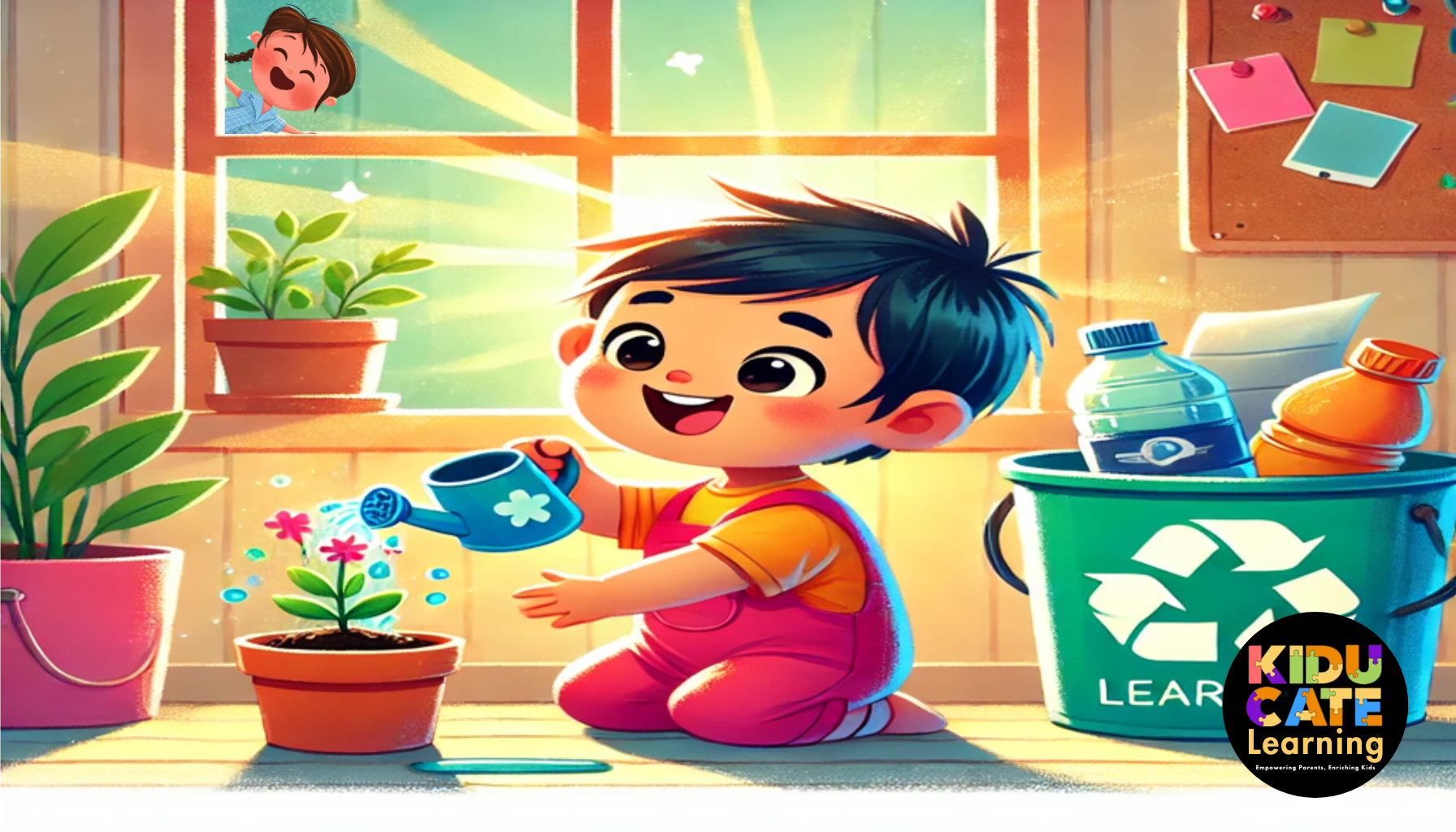Tiny Hands, Big Impact: Raise Eco-Friendly Kids

Why Start Early with Eco-Habits?
As parents, we’re always teaching—through what we say, what we do, and what we model. One of the most lasting lessons we can give our children is a love and respect for the planet. But how early should we start? Research shows that even toddlers begin forming value-based behaviors from as young as age two, especially through imitation and repeated routines (Grusec & Hastings, 2015). That means the earlier we introduce eco-kind habits, the more likely they’ll become lifelong patterns.
And the good news? It doesn’t take grand gestures. Small, joyful actions—like sorting recycling together or watering plants—can make a big impact.
1. Nature Walks That Spark Curiosity
Take a walk in your neighborhood or local park. Point out leaves, bugs, birds, and flowers. Ask questions:
🌱 “Why do trees lose leaves?”
🐞 “Where do worms live?”
These open-ended chats help children build connections with nature, which is key to developing environmental stewardship later in life (Chawla, 2009). Bring along a paper bag for collecting natural treasures—leaves, rocks, or feathers—for crafts later!
2. Recycling Made Playful
Turn recycling into a toddler game. Set up bins with pictures: ♻️ plastic, paper, and cans. Ask your child to sort clean items with you.
Make it fun:
-
Use a song or chant for each material.
-
Reward correct sorting with stickers or praise.
Children thrive on hands-on experiences, and this daily routine builds both responsibility and pattern recognition (Montessori, 1967).
3. DIY Eco-Crafts: Creativity Meets Conservation
Use leftover cardboard, cereal boxes, or old magazines for craft time.
🎨 Ideas:
-
A robot from recycled containers
-
A nature collage from your walk
-
Homemade paper beads from old flyers
These activities foster creativity and teach kids the value of reuse—a cornerstone of sustainable thinking.
4. Watering with Purpose: A Ritual of Responsibility
Give your child a small watering can and assign them a “plant buddy” to care for. Whether it’s a basil pot in the kitchen or a tree in the yard, regular care builds empathy and patience.
You’re also teaching about plant cycles, water conservation, and responsibility—without a lecture.
5. Storytime That Plants Seeds of Awareness
Books can reinforce eco-values in magical ways. Try:
-
The Earth Book by Todd Parr
-
Compost Stew by Mary McKenna Siddals
-
We Are Water Protectors by Carole Lindstrom
Storytelling encourages discussion and gives kids language for empathy, responsibility, and interconnectedness—all crucial for eco-conscious living (Nicolopoulou, 2017).
Key Takeaways:
🌍 Children are never too young to learn eco-kind habits.
🌱 Joyful, hands-on activities help turn green values into daily practices.
📚 Simple routines—recycling, watering, reading—lay the groundwork for lifelong sustainability.
Call to Action:
Which eco-friendly activity will you try this week? 🌿 Share your child’s favorite “green routine” in the comments or tag us on Instagram @KiducateLearning!
📚 Citations:
-
Chawla, L. (2009). Participation and the ecology of environmental awareness and action. In Environmental Education Research, 15(3), 345–370.
-
Grusec, J. E., & Hastings, P. D. (2015). Handbook of Socialization: Theory and Research (2nd ed.). The Guilford Press.
-
Montessori, M. (1967). The Absorbent Mind. Holt, Rinehart and Winston.
-
Nicolopoulou, A. (2017). Children and stories: Narrating the social world. In Child Development Perspectives, 11(1), 14–19.
